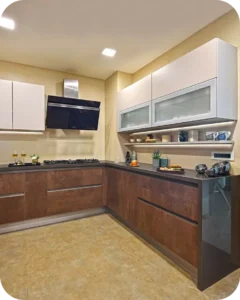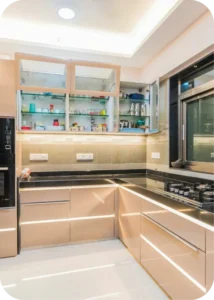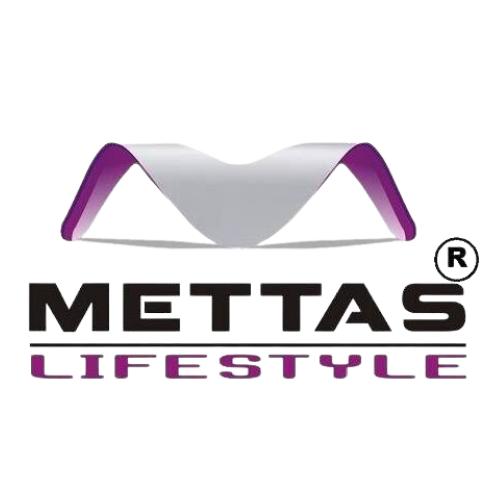

Table of Contents
ToggleIntroduction of Budget-Friendly Modular Kitchen

When it comes to creating the heart of your home, a budget-friendly modular kitchen can be a game-changer. Not only does it offer functionality and style, but it can also be budget-friendly if you plan it right. In this comprehensive guide, we’ll walk you through 15 expert tips to design a cost-effective modular kitchen that doesn’t compromise on aesthetics or efficiency by Mettas Lifestyle.
1. Define Your Budget

Before diving into the world of modular kitchens, it’s essential to establish a clear budget. This step lays the foundation for your entire kitchen project. A defined budget helps you make informed decisions about materials, appliances, and design elements. Remember to account for both the material costs and the cost of labor, as well as any potential unforeseen expenses.
2. Research Thoroughly

Thorough research is the cornerstone of a successful modular kitchen design project. Take the time to explore various kitchen designs and materials available in the market. Dive into magazines, websites, and social media platforms to gather inspiration. Create a mood board or Pinterest board filled with images of kitchens that resonate with your style preferences. This visual reference will be invaluable as you start planning.
3. Optimize Layout

The kitchen layout plays a significant role in both functionality and cost-efficiency. A well-optimized layout minimizes the need for extensive plumbing and electrical work, which can add substantial costs to your project. Consider classic kitchen layouts like the L-shaped, U-shaped, or galley designs, as they often require less structural alteration and can save you money.
4. Select Ready-Made Cabinets

When it comes to kitchen cabinets, pre-fabricated or ready-made options can be your budget-friendly allies. These cabinets come in various styles, sizes, and finishes, catering to a wide range of design preferences. Ready-made cabinets not only save you time but also money compared to custom-built ones. They are available at home improvement stores and can be a great DIY option if you’re handy.
5. Quality Over Quantity

While it’s essential to stick to your budget, don’t compromise on the quality of critical elements like countertops and cabinets. Investing in high-quality materials, even if they seem pricier upfront, pays off in the long run. Durable materials like solid wood or plywood for cabinets and quality laminate or stone for countertops ensure your kitchen lasts for years, reducing the need for costly replacements or repairs.
6. Open Shelves

Embrace the trend of open shelving in your modular kitchen design. Open shelves not only cost less than upper cabinets but also create an airy and spacious atmosphere. They encourage you to keep things organized and display your favorite kitchenware, adding a personal touch to your space. Choose stylish brackets and finishes to match your kitchen’s aesthetic.
7. Energy-Efficient Appliances

Your choice of modular kitchen appliances can significantly impact your long-term budget. Opt for energy-efficient appliances with the ENERGY STAR label. These appliances consume less energy, which translates to lower utility bills over time. While energy-efficient appliances may have a slightly higher upfront cost, the savings in energy bills make them a wise investment.
8. DIY Where You Can

Consider taking a hands-on approach to some aspects of your kitchen renovation. Simple tasks like painting the walls, installing backsplashes, or even assembling furniture can be DIY projects. Not only do these tasks save on labor costs, but they also allow you to personalize your kitchen, adding your unique touch to the space.
9. Opt for Laminates

Laminate countertops are a cost-effective alternative to pricier materials like granite or marble. They come in a wide range of colors and patterns, many of which convincingly mimic the look of natural stone. Laminates are durable, easy to clean, and resistant to stains and scratches. Plus, they are budget-friendly and offer excellent value for your money.
10. Minimalistic Hardware

Simplicity often equals cost savings when it comes to hardware. Choose sleek, minimalistic handles and knobs for your cabinets and drawers. These minimalist hardware options not only complement modern kitchen designs but also come at a lower cost compared to ornate or custom-made alternatives. Mixing and matching hardware styles can add visual interest without breaking the bank.
11. Lighting Matters

Proper lighting can transform the look and feel of your modular kitchen. Invest in energy-efficient LED lighting fixtures, such as under-cabinet lights, pendant lights, and recessed lighting. LED lights not only enhance the kitchen’s aesthetics but also reduce your electricity bill due to their energy-saving properties. A well-lit kitchen creates a welcoming and functional space for cooking and entertaining.
12. Recycle and Upcycle

Consider sustainability in your budget-friendly kitchen design by using recycled or upcycled materials. For instance, old wooden doors or reclaimed wood can be repurposed as stylish kitchen countertops. This environmentally conscious approach not only reduces your carbon footprint but also adds a unique and rustic touch to your kitchen.
13. Plan for Future Upgrades

Design your kitchen with flexibility in mind. This means leaving space for future upgrades or additions. By planning ahead, you can avoid the need for a complete kitchen overhaul when you decide to make changes or add new appliances. Creating a versatile kitchen layout can save you money in the long term.
14. DIY Storage Solutions

Custom storage solutions can make the most of your kitchen’s available space. Consider creating pull-out shelves, drawer dividers, and other innovative storage solutions that maximize every inch of your kitchen. These DIY projects can help keep your kitchen organized, reducing clutter and making it more efficient.
15. Maintain Your Kitchen

Finally, maintaining your kitchen is essential for long-term budget-friendliness. Regular cleaning and upkeep of appliances, cabinets, and countertops prevent damage and wear, reducing the need for costly repairs or replacements. Create a maintenance schedule to ensure your kitchen retains its beauty and functionality for years to come.
In conclusion, designing a budget-friendly modular kitchen requires a combination of careful planning, creativity, and informed choices. By following these 15 detailed tips, you can create a kitchen that not only respects your budget but also reflects your personal style and provides long-lasting value.
Related topics you must read: Modular Kitchen Layouts
FAQs:
Absolutely! With the right planning and choices, you can achieve a stylish modular kitchen without overspending. Creativity and careful selection of materials are key.
Choose energy-efficient appliances, and LED lighting, and consider insulating walls and windows. These measures not only save money but also contribute to a greener home.
Laminates are a cost-effective choice that offers versatility in colors and patterns. They provide a durable and budget-friendly solution without compromising on style.
Yes, designing your kitchen with future upgrades in mind is a smart approach. Leave space for additional appliances or storage solutions, making future modifications more convenient and cost-effective.
Painting the walls and cabinets is one of the simplest and most cost-effective DIY projects for transforming your kitchen’s appearance. It allows for personalization without breaking the bank.





2 comments. Leave new
Incredible post! It really resonated with me
There’s a calm wisdom in your words — like listening to someone who has truly taken the time to understand the world.